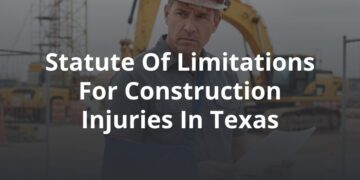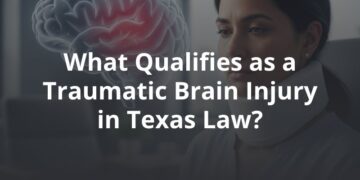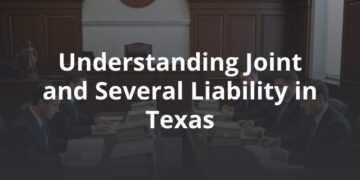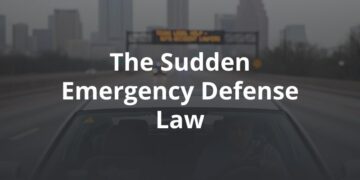With COVID-19 forcing people off the roads and into their homes, it was easy to assume that 2020 would be a year with fewer traffic-related fatalities than normal. It turns out the opposite was true.
Though the mileage driven on Austin roads decreased nearly 80 percent, traffic deaths actually rose 7 percent in the city.
Austin ended 2020 with a total of 94 traffic deaths, the most seen in our growing Texas city since 2015. So how did fatalities go up when traffic and other serious injuries went down? It’s likely due to open roads and speeding, according to officials.
How Speeding Contributes to Fatal Crashes
While traffic is typically considered a nuisance, more cars on the road act as natural speed control. With fewer vehicles on the streets and more open roads, going over the speed limit becomes much more tempting.
And without the deterrence of traffic, speeding drivers can cause more accidents involving other vehicles, cyclists, and pedestrians.
Furthermore, the effects can be more deadly. According to the Austin Transportation Department, speeding is the primary contributor in 24 percent of car accidents that result in a fatality.
This makes it one of the top behaviors that contribute to most of the fatal crashes in Austin, along with driving while intoxicated, distracted driving, and failing to yield.
The faster a person drives, the more likely someone will die in a crash with them.
One study reports that the risk of death is about 10 percent when a pedestrian is hit by a car going 24 mph, and that risk increases to 90 percent when a car is going 55 mph. So even if there were fewer crashes in 2020 overall, those that did happen appear to be more fatal — likely because of speed.
Whether due to drunk driving, distracted driving, or just feeling the need to test the limits of a car’s speedometer, speeding is not uncommon. But Austin has a plan to try to decrease speeding and resulting traffic deaths.
Austin’s Vision Zero Plan
Under Austin’s Vision Zero plan, the city aims to decrease certain speed limits to 25 mph and add speed mitigation measures like speed humps and raised crosswalks around the city. The goal of the Vision Zero plan is to eliminate all traffic deaths and serious traffic-related injuries in the city by 2025.
The plan aims to design safer streets instead of counting on people to change their driving behaviors and always obey the speed limits.
While Vision Zero can tackle speeding in city streets, it has no control over state-run highways, where speeding and fatal accidents commonly occur. In fact, about one out of every five victims of a traffic death in 2020 was injured on I-35 or an associated frontage road. That means that despite the city’s best efforts, traffic deaths are still likely to occur in Austin.
What to Do in a Wrongful Death Accident Case
Whether the pandemic means another year of staying at home or more of a return to normal, traffic deaths are still likely to happen. Few things are as painful as a loved one’s wrongful death, and dealing with the aftermath of a traffic accident death can be emotionally devastating.
Because of this, you’ll want to consult with a wrongful death lawyer who can focus on the details of your wrongful death case so you can focus on grieving.
An attorney can look over the details of your case to determine who was at fault, if any traffic rules were broken, if speeding was a factor, and the type of compensation you may be entitled to.
Depending on the circumstances, you may be able to recover the following damages:
- Medical expenses for any medical bills incurred before death
- Funeral and related burial expenses
- Loss of household income and other financial losses
- Loss of inheritance
- Mental health treatment and counseling
- Loss of support
- Loss of companionship
- Mental anguish
When a victim has been killed due to another’s extremely negligent conduct — such as in an accident with a drunk driver — you may be able to claim punitive damages as well.
It’s important to note that in Texas only a deceased person’s surviving spouse, children, or parents can file a wrongful death lawsuit. Siblings and grandparents are not permitted to file a wrongful death suit.
What’s more, a lawsuit must be filed within three months of the traffic death. That’s why, even though it’s likely not on the top of your list after an accident, you should contact a wrongful death attorney in Austin as soon as possible after a traffic death.
Schedule a Free Consultation with FVF
If your loved one was the victim of a traffic death, FVF’s team of compassionate wrongful death attorneys are here to help. Our team will offer you guidance and educate you on your rights following a fatal accident so that you can get the compensation you deserve.
Our team is intimately familiar with the civil laws governing wrongful death claims, and we can help you navigate the complexities of managing your deceased loved one’s affairs.
Our attorneys take a no-pressure approach and are available to answer any questions you have about injuries incurred in a collision, whether or not they resulted in death.
Contact us today for a free consultation with an experienced wrongful death attorney in Austin who can help.






